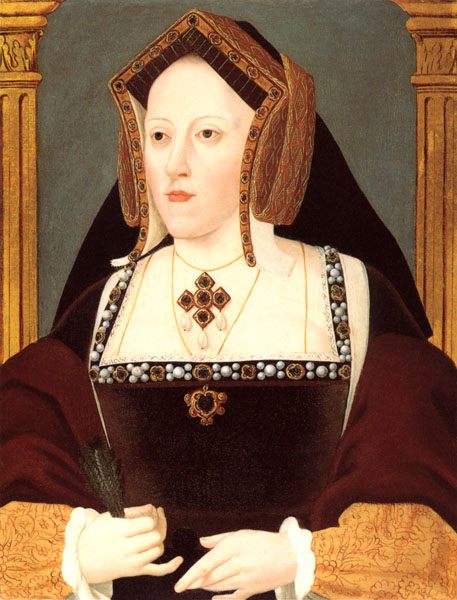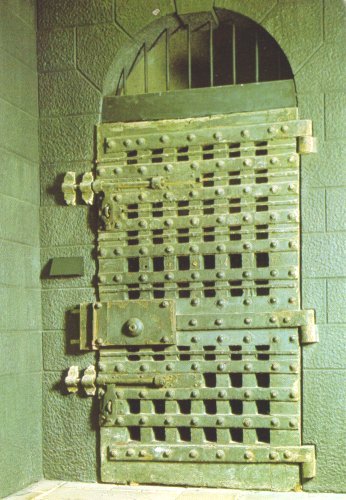Blessed John Forest
Born in 1471, presumably at Oxford, where his surname was then not unknown; suffered 22 May, 1538. At the age of twenty he received the habit of St. Francis at Greenwich, in the church of the Friars Minor of the Regular Observance, called for brevity’s sake “Observants”. Nine years later we find him at Oxford, studying theology. He is commonly styled “Doctor” though, beyond the steps which he took to qualify as bachelor of divinity, no positive proof of his further progress has been found. Afterwards he became one of Queen Catherine’s chaplains, and was appointed her confessor.
In 1525 he appears to have been provincial, which seems certain from the fact that he threatened with excommunication the brethren who opposed Cardinal Wolsey’s legatine powers. Already in 1531 the Observants had incurred the king’s displeasure by their determined opposition to the divorce; and no wonder that Father Forest was soon singled out as an object of wrath. In November, 1532, we find the holy man discoursing at Paul’s Cross on the decay of the realm and the pulling down of churches. At the beginning of February, 1533 an attempt at reconciliation was made between him and Henry: but a couple of months later he left the neighborhood of London, where he was no longer safe. He was probably already in Newgate prison 1534, when Father Peto delivered his famous sermon before the king at Greenwich. In his confinement Father Forest corresponded with the queen and Blessed Thomas Abel and wrote a book or treatise against Henry, which began with the text: “Neither doth any man take the honor to himself, but he that is called by God as Aaron was.”
On 8 April, 1538, the holy friar was taken to Lambeth, where, before Cranmer, he was required to make an act of abjuration. This, however, he firmly refused to do; and it was then decided that the sentence of death should be carried out. On 22 May following he was taken to Smithfield to be burned. The statue of “Darvell Gatheren” which had been brought from the church of Llanderfel in Wales, was thrown on the pile of firewood; and thus, according to popular belief, was fulfilled an old prophecy, that this holy image would set a forest on fire. The holy man’s martyrdom lasted two hours, at the end of which the executioners threw him, together with the gibbet on which he hung, into the fire.
Father Forest, together with fifty-three other English martyrs, was declared Blessed by Pope Leo XIII, on 9 December, 1886, and his feast is kept by the Friars Minor on 22 May. Some years ago rumor was current that the relics of the martyr had been taken to Spain, and were preserved at a residence of the Friars Minor somewhere in the north of that country. In 1904 the writer of this article made inquiries, to which the Provincial of Cantabria replied that the fathers there were not aware of the existence of the holy relics in any part of Spain, and that they thought the rumour was unfounded. It seems therefore most probable that the mortal remains of Father Forest still lie hidden at Smithfield, near the corner of St. Bartholomew’s Hospital, opposite the gate of the ancient priory.
GARZIA’S MS. at Stonyhurst; Calendar of State Papers; Grey Friars Chron.; Wriothesley’s Chron.; Spanish Chron., Wood, Athenæ Oxon. (London, 1691); THARDDEUS, Life of Bl. John Forest (London, 1888); BOURCHIER De Martyrio Fantrum Min. (Ingolstadt, 1583); HÜ, Menotogium Franc. (Munich, 1698)
(Catholic Encylopedia)
Nobility.org Editorial Comment: —
Not only was Henry VIII’s divorce of Queen Catherine of Aragon shameful, but his pride and unbridled sensuality were the cause for England’s separation from the Catholic Faith.
Blessed John Forest was among those who saw clearly all the nefarious consequences of the King’s sinful actions and acted honorably, even though knowing it would cost him his life. He was a perfect choice as the Queen’s confessor. He was able to comfort, strengthen, and guide her in this monumental trial, which she faced with all the courage and nobility of her forefathers as they battled during the Crusades, including the valor of her parents, the Catholic Kings of Spain, Ferdinand and Isabella.












